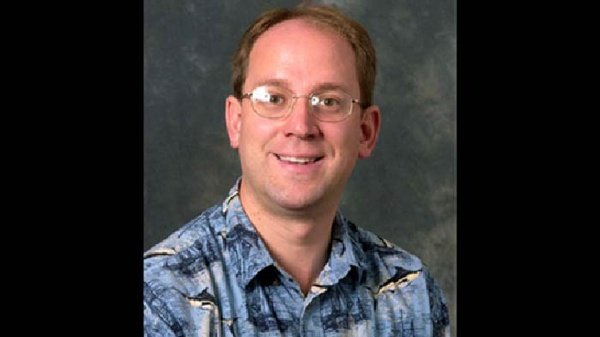Building Small Tools for Big Adventures
May 22, 2012

With the ability to define the makeup of molecules and determine the mass of miniscule particles, mass spectrometers are particularly useful instruments. NASA hopes to more fully take advantage of these machines by expanding the mass spectrometer’s area of operation — all the way to Mars.
By sending mass spectrometers on space missions, scientists could better identify planetary substances, increasing our understanding of the solar system and the universe at large. But getting these bulky instruments up there is a real issue. Faced with many obstacles, the national space program has turned to Professor Daniel Austin, of the Department of Chemistry and Biochemistry, for help.
In collaboration with Aaron Hawkins, a faculty member in the Fulton College of Engineering and Technology, Austin has spent the last five years under NASA funding, exploring different ways to miniaturize mass spectrometers. As laboratory mass spectrometers typically weigh hundreds of pounds, this is no easy task.
Diverging from the route many other groups have taken, Austin has opted to create an entirely new design instead of trying to make a scaled-down version of a standard instrument. Specifically, he has worked to develop a replacement for the large metallic components that create electromagnetic fields within mass spectrometers.
"[They're] heavy, and [they're] fairly big," said Austin of these components in a regular mass spectrometer. To downsize the instrument, he's using micro-lithography on ceramic plates.
Lithography - a process that etches images onto smooth surfaces - has allowed Austin to develop 2D ceramic plates that can create electromagnetic fields with shapes similar to those produced using a much larger 3D instrument. Tiny ring patterns etched onto these wafer-thin plates serve as "independently adjustable electrode elements."
"We can put a different voltage on each one, and that's what allows us to shape the electric fields," Austin said. Not only can this instrument keep up with other devices, but it is also able to create different shapes of fields no other instruments have yet been capable of producing.
Satisfied already with the results, Austin is excited to continue to explore these unexpected abilities of his ceramic plates. NASA is also pleased with the progress. Having already funded another three years of research, they express interest and confidence that Austin may have developed an instrument that could soon find itself sitting on a launch pad, ready to gather data from the far reaches of space.
By Natalie Rice, College of Physical and Mathematical Sciences